-
Posts
455 -
Joined
-
Last visited
Content Type
Profiles
Forums
Gallery
Events
Posts posted by molasses
-
-
Thank you, Jason, for your interest, this has been a fascinating research project - to the detriment of my Esmeralda build.
HMS Cruizer's armament was changed to the class standard 16 x 32 pounder carronades + 2 x 6 pound chase guns sometime before the first of her sister ships, Scorpion, entered service (with the standard armament) in November 1803.
It also seems likely that the fore and aft raised platforms were the standard after Cruizer, although I have by no means researched all of them (perhaps 10%).
Like Pelorus in 1826, Fly and Grasshopper (the 2nd one, the first was captured to become the Dutch Irene) had their rig changed to ship-sloop in 1822 (according to plans at the NMM, Greenwich, website). It may be of interest to know that the mast positions differed between Snake and Victor (according to the same set of plans). Pelorus was converted back to a brig in 1831.
It's ironic that Pelorus had been engaged in suppression of the opium trade along the China coast in 1840-41, then sold out of the service in Singapore in 1842 to became an opium smuggler until she wrecked in 1844. Curlew was also an opium runner as Jamesina after she sold out of service in 1822 until at least the mid 1830's.
By 1830, only twenty-five of the class (whatever the rig) remained in service. In 1840, ten remained. By 1850, only two were still in service, Pelican and Doterel. Doterel was broken up in 1855 as the last one in the Royal Navy. As we already know, Pelican was transferred to the Coast Guard in 1850 and sold in 1865.Edited for typo corrections.
-
I built her in a long narrow bottle many years ago. I remember some of my research at that time (pre-internet). She had a crew of 16 to 18 and was equipped with a number of steam powered winches. She could not enter many ports when fully loaded so was forced to sail at about 70% capacity. She was designed by a yacht designer and as a result either her hull was too large or her rig too small (depending on which way you look at her) for good sailing qualities. The gaff mainsails were identical on masts 2 thru 6, the 7 gaff topsails and 6 staysails were also identical. The crew usually referred to the masts by number.
-
Cruizers, part 5: HMS Epervier
The Cruizer-class brig-sloop HMS Epervier (French for sparrow hawk) launched in December 1812, commissioned in January 1813 under Commander Richard Walter Wales and assigned to the Halifax station.
On 20 August 1813, she captured the schooner Lively followed by Active on 20 September. Three days later Epervier, Majestic and Wasp captured Resolution. On 5 October, Epervier and Fantome captured the American privateer Portsmouth Packet and on 3 November, they captured the Peggy.
On 23 February 1814, Epervier captured the American privateer brig Alfred off Cape Sable, the southern-most point of mainland Florida. Alfred, which carried 16 x long 9 pound guns and a crew of about 100, surrendered without a fight. HMS Junon (38) was also within sight. While returning to Halifax with Alfred, Commander Wales learned of a plot between some of the crew of Epervier and the prisoners to take over one or both vessels and escape to America. Wales arrived in Halifax two days later after sailing through a gale. There he notified his commanding officer (who was also his uncle), Admiral Sir John Borlase Warren, that he did not trust his crew. Warren dismissed Wales’ concerns and gave him orders for Epervier to escort a small convoy to Bermuda and the West Indies in company with the schooner Shelburne. Before leaving on 3 March, Wales exchanged her 2 x 6 pound chase guns and 12 pounder carronade boat gun for 2 x 18 pounder carronade boat guns.2
On 14 April, Epervier sailed from Port Royal, Jamaica in company with a merchant brig bound for Bermuda; they stopped at Havana, Cuba where Epervier took on board $118,000 in coins. They left for Bermuda on 25 April. Early in the morning of 29 April, a Russian merchant ship going to Boston joined the convoy. Shortly after that, another ship appeared to the southwest in pursuit. This was the USS Peacock.
USS Peacock’s Specifications
Length: 119 ft
Beam: 31 ft 6 inches
Tonnage: 509 (burthen)
Rig: ship-rigged sloop
Armament: 20 x 32 pounder carronades + 2 x 12 pounder chase guns
Complement: 166
Peacock was one of three new 22-gun flush-decked ship-rigged sloops-of-war that entered US Navy service in the fall and winter of 1813, the other two being Frolic and Wasp. Peacock launched on 19 September 1813 at New York Navy Yard and commissioned with Master Commandant Lewis Warrington in command soon after. She broke through the British blockade of New York on 12 March 1814 with supplies for the naval station at St. Mary’s, Georgia and after making the delivery headed south, eventually arriving near Cape Canaveral, Florida on 29 April.
HMS Epervier vs USS Peacock
29 April 1814
When Epervier saw Peacock, she changed course to the southwest directly towards her. After Peacock, flying a British ensign and pennant, did not respond to Epervier’s signals, Wales signaled to his convoy that the unidentified sail was the enemy and the convoy set all sail heading northeast. At about 9:40 am Peacock ran up several US flags and cleared for action. In the two hours since both ships had sighted each other the wind had gradually veered from a little south of east to almost directly out of the south.
At 10 am, with Epervier close hauled on the port tack, Peacock, at half gun range with the wind over her starboard quarter, turned slightly to the north but Epervier kept her bowsprit pointed directly towards the bow of her enemy. Epervier then turned into the wind, fired a raking broadside close off Peacock’s starboard bow and continued her turn. Peacock fired her starboard battery at 10:20 during Epervier’s turn. Both broadsides took effect aloft; Peacock suffered her only significant injury – a disabled foresail yard – during this exchange.
At 10:35, Epervier completed her turn on a course parallel to Peacock and fired an ineffectual broadside from her port battery. Peacock immediately returned fire and continued with a bombardment from her starboard battery at Epervier’s hull. Epervier’s main topmast fell by the side and then the mainsail boom fell to the deck smashing the wheel, rendering her unmanageable. Epervier’s return fire had fallen to nothing by this time.
Anticipating that Peacock’s next move would be to come along side and board, Wales attempted to rally his crew to board her the moment the two vessels touched. His crew refused. Epervier struck her colors at 11:05 am.
Peacock suffered the one injury to the foresail yard, some damaged rigging and sails and two men slightly wounded. Repairs were completed in less than 45 minutes. Warrington pointed out that not one shot from Epervier had struck Peacock’s hull. The prize master on Epervier, First Lieutenant John B. Nicolson, reported 9 dead or mortally wounded and 14 wounded, 45 shot holes in her hull and 5 feet of water in the hold, bowsprit severely damaged, most of the foremast stays and braces shot away, main topmast over the side, main gaff sail boom shot away and the mainmast shot through but still standing only because the sea was flat and the wind was light. Jury repairs to Epervier were completed by sunset but only through great exertion to prevent her from sinking. No doubt the discovery of $118,000 in Epervier’s lock room came as a great surprise.
The next day, the Americans sighted two British frigates. Peacock successfully decoyed them away from Epervier and later escaped from their pursuit. Epervier arrived in St. Mary’s, Georgia on 1 May; Peacock arrived on the 4th.
The victory of the Peacock over the Epervier was one of the most one-sided of the War of 1812, even though the two opposing vessels were not grossly disparate in strength. It was stated that although Peacock's fire had dismounted some of Epervier's carronades, more of them fell from their mounts when they were fired. Wales had carried out little or none of the gunnery practice that would have revealed defects in the guns or carriages before it was too late to remedy them. Wales had also reported disaffection and unrest among his crew and, unusually for the Royal Navy in the War of 1812, they failed in their duty to fight to their utmost. The court martial on 20 January 1815 revealed that Epervier had the worst crew of any vessel on her station. In particular, her crew consisted mostly of invalids from the hospital.
After completion of repairs Epervier went into US Navy service with the same name and rate. USS Epervier, under Master Commandant John Downes, sailed to join the Mediterranean Squadron under Commodore Stephen Decatur, Jr., whose mission was to stop the harassment of American shipping by the Dey of Algiers. Epervier joined with Guerriere, Constellation, Ontario and five smaller vessels in the Battle off Cape Gata on 17 June 1815, which led to the capture of the 44 (or 46)-gun frigate Meshuda (or Mashuda). Epervier fired nine broadsides into Meshuda to induce her to surrender after Guerriere had already crippled the Algerian vessel.
Two days later the Epervier and three of the smaller vessels of the squadron captured the Algerian brig of war Estedio, of twenty-two guns and 180 men, at the Battle off Cape Palos. After the conclusion of peace with Algiers, Decatur transferred Downes to Guerriere.
After the Dey signed a treaty, Decatur chose Epervier, under Lieutenant John T. Shubrick, Guerriere's former first lieutenant, to carry a copy of the treaty and some captured flags to the United States. Captain Lewis and Lieutenants Neale and John Yarnall came on board as passengers. Epervier sailed through the Straits of Gibraltar on 14 July 1815 and was never seen again.
Peacock went on two more cruises in the War of 1812 with Lewis Warrington still in command during which she captured eighteen merchant vessels. After the war, she continued to serve almost continuously until 1841, when she ran aground and broke up on a bar of the Columbia River in Oregon as part of the United States Exploring Expedition. Her crew and most of the scientific data were successfully taken off. She had undergone a breakup and rebuild in 1828 which reduced her armament to 8 x long 24 pounders and 2 x long 9 pounders and increased her displacement to 650 tons specifically for exploratory and extended duration cruises while retaining her overall length and sail plan.1
After the war, Lewis Warrington received promotion to Captain in command of Macedonian, then Java, followed by Guerriere. He also commanded the West India Station during the last stages of the piracy suppression campaign, which earned him the title of Commodore. He also served as Commandant of the Norfolk Navy Yard, multiple times as a Commissioner of the Navy Board, Chief of the Bureau of Yards and Docks, Secretary of the Navy (temporarily, between the death of the Secretary and appointment of a replacement) and finally, as Chief of the Bureau of Ordinance until his death in 1851 at age 69. Three destroyers were named in his honor in the early and middle 20th Century.
Epervier might make an interesting variation of Caldercraft/Jotika’s Cruizer with the fore and aft platforms and the armament change. She could also be built as she appeared in either the Royal Navy or the US Navy. The US Navy had hull drawings made which were redrawn by Howard I. Chapelle for his book The History of the American Sailing Navy. These drawings also show the changes made for US service: increased mast rake, lowered gun ports and a low rail on top of the bulwarks at the forecastle platform.1
Next: HMS Reindeer
Edits: 1 additions to text
2 "carronades or gunnades" to "carronade boat guns", see post #33
Sources:
The Naval History of Great Britain by William James, 1824
History of the Navy of the United States by J. Fenimore Cooper, 1836
The Naval War of 1812 by Theodore Roosevelt, 1900
The Age of Fighting Sail by C. S. Forester, 1957
Dictionary of American Naval Fighting Ships, Dept US Navy, (online)
- dgbot and Beef Wellington
-
 2
2
-
Jason:
I've been watching all the Snake builds (including yours) and learning from them. I'm also watching for Cruizers from MSW 1.0 to return and for new Cruizer builds.
I haven't purchased a Cruizer kit yet - I don't want to distract myself from Esmeralda - but I'm looking forward to working in a larger scale. 1/64 is huge compared to 1/640.
-
Jason:
You're absolutely correct about the guns in the bridle ports. Even without the small platform, such as on Snake and on some of the Cruizers, there is not enough open deck to work 6 pounders at the bridle ports. One of the secondary sources I cited used "bridle ports" when he should have wrote "forward gun ports". I believe it was from James who is usually accurate, but I've caught him in mistakes before. I'm correcting the article.
Thank you for the correction,
Dave
-
Cruizers, part 4: HMS Pelican
The Cruizer-class brig-sloop HMS Pelican launched in August 1812, commissioned on 11 December 1812 under Commander John Fordyce Maples and assigned to the Irish station for convoy escort duty. On 5 May 1813, she captured the American schooner Neptune’s Barge near Jamaica. Pelican carried the usual class armament of 16 x 32 pounder carronades, 2 x 6 pound guns (in the forward ports) and a 12 pound carronade mounted on a gun carriage for use as a boat gun. She also had a pair of 6 pound brass guns, acquired by her captain in Jamaica, at the stern ports and a crew of 116 men and boys.
On 10 August 1813 she arrived in Cork, Ireland, as escort to a convoy from the West Indies and joined the hunt two days later for USS Argus which had been raiding British shipping in home waters for a month.
USS Argus’s Specifications
Length: 94 ft 6 inches (gun-deck)
Beam: 28 ft 2 inches
Tonnage: 299 (burthen)
Rig: brig-rigged sloop
Armament: 18 x 24 pounder carronades + 1 x 12 pounder chase gun
Complement: 102
On 18 June 1813 the USS Argus, carrying the new American minister to France, eluded the British blockade of New York Harbor with Master Commander William Henry Allen in command. Argus was Allen’s first command after promotion for his part as First Lieutenant of the United States during her victory over the Macedonian. Argus had her armament increased by 2 x 24 pound carronades in the forward ports and removal of 1 x 12 pound gun while blockaded in New York (previously 16 x 24 + 2 x 12)
Argus disembarked the minister in Lorient on 11 July and left three days later to begin commerce raiding in the English Channel and Irish Sea. During the following month, Argus captured nineteen vessels. Most were burned rather than being sent to America, France or a neutral port as prizes (with prize crews) which would have reduced Argus’s fighting ability.
On the evening of 13 August, Pelican observed a burning ship ahead and a brig sailing away from it. Maples ordered all sails set to give chase but lost sight of her in the darkness. At 4:45 am, Pelican spotted flames to the northeast from a ship that had just been fired with the same brig seen earlier separating and heading towards several merchantmen to the southeast.
HMS Pelican vs USS Argus
14 August 1813
Although Argus was the faster vessel and was lighter armed (about 82% of Pelican’s weight of broadside) Allen chose to shorten sail at about 5:00 am to allow Pelican to catch up rather than outrun her and evade battle. With a moderate wind from the south, Pelican had the weather gage. At a few minutes before 6 am Pelican hoisted her colors, followed by Argus which then wore onto the starboard tack and fired her broadside at grape shot range which was reciprocated by Pelican.
Four minutes later, Captain Allen lost his left leg to a round shot from Pelican but refused to go below until he fainted from blood loss when First Lieutenant William H. Watson took command and ordered him taken below. Watson soon followed his captain to the orlop with a grape shot wound to the head. Second Lieutenant William Howard Allen (who was not related to William Henry Allen) then took command. Argus suffered severe damage to her main braces, main springstay, gaff and trysail mast in these first minutes of the battle.
At 6:14, Pelican attempted to pass astern of Argus, but Lieutenant Allen ordered all sails aback, frustrating the attempt and bestowing at the same time an ineffectual raking broadside. Two or three minutes later Argus lost the use of all her main sails after suffering more rigging damage and fell off before the wind. Pelican at 6:18 passed her stern, raked her heavily and ranged up on her starboard quarter. In a few minutes, the wheel-ropes and more rigging were shot away and Argus became utterly unmanageable. Pelican continued raking her with impunity and at 6:35 passed her broadside to take up a position on her starboard bow. At 6:45 the brigs came together and the British were in the act of boarding when Argus struck her colors.
Pelican suffered but two dead and five wounded. Captain Maples had a narrow escape when a spent grape or canister shot struck him in the chest, breaking a coat button, and fell to the deck. Her hull was peppered with embedded grape shot, her rigging and sails were much cut up, her foremast, main topmast and royal masts were wounded, and two carronades were dismounted.
Argus had ten killed or mortally wounded and fourteen wounded. Besides the damage previously noted she also had her hull and lower masts cut up and several carronades dismounted.
Captain Maples dispatched his prize with half her crew, including the wounded, and a third of his crew with his first and only lieutenant in command to Plymouth. Maples took Pelican with the remaining half of the prisoners back to Cork to report his victory to Admiral Thornborough. Maples received a promotion and a post command. Captain Allen died from his wound on 18 August and was buried with full naval honors on 21 August. Lieutenant Watson recovered from his head wound. Argus was not taken into service with the Royal Navy and her crew was imprisoned until the end of the war.
This engagement reversed the numerical disparities in size, armament and crew between the Cruizer class brig-sloops, Frolic and Peacock, and the bigger American ship-sloops, Wasp and Hornet, with predictable results. Although the amount of disparity between Argus and Pelican was about the same as in the other two battles, the outcome, in terms of damage inflicted, was not. Wasp dismasted Frolic, inflicting 58 casualties while suffering 15 in 45 minutes of battle. Hornet partially dismasted and sank Peacock, inflicting 38 casualties while taking 3 in 15 minutes. Pelican disabled Argus with rigging damage, inflicting 28 casualties while taking 7 in 45 minutes. These numbers suggest that the gunnery on Pelican was about on par with the gunnery on Frolic while the gunnery on Argus was worse than on Peacock. Reasons for the poor American gunnery in this battle have been debated ever since.
Some of the factors debated are:
1) Physical exhaustion from a month of being on nearly constant alert in the enemy’s home waters while capturing nineteen enemy vessels, including two during the night before the battle, which would have prevented anyone on board Argus from getting any sleep.
2) One of those two captured vessels had of cargo of wine from Portugal. There is no reason to believe that an unknown amount of that wine did not somehow make its way on board the Argus and into an unknown number of her crew.
3) Argus lost her captain and first officer in the first eight minutes of battle and her two midshipmen as well some time during the battle. This would have left her batteries without proper supervision and could easily have resulted in poor gunnery. The loss of four of the five officers on board could very easily demoralize a crew.
4) An officer of the Argus reported after the War was over that Captain Allen had taken a quantity of powder on board from a prize to replenish her magazine. The gunner shortly after filled a number of cartridge bags with this powder that had been placed in the top of the magazine. It was later ascertained that this powder was condemned and bound for South America to be sold. This officer also claimed as proof that Pelican’s sides were dotted with impressions of shot that did not enter.
HMS Pelican returned to convoy escort duty for the remainder of the War of 1812. She later served in the Mediterranean suppressing piracy.
In 1850 Pelican was transferred to the Coast Guard, renamed CGWV 29 and stationed at Rye, East Sussex. She was sold in 1865 giving her the longest government career – 53 years – of all the Cruizer class brig sloops.
Pelican might make an interesting variation of Caldercraft/Jotika’s Cruizer with the armament change. She was remarkable for being the only Cruizer to win against a nominally equal American vessel in an otherwise very boring career, and for her longevity.
Next: HMS Epervier
Edited for font size and a text correction.
Edited for correction of armament on Argus.
Sources:
The Naval History of Great Britain by William James, 1824
History of the Navy of the United States by J. Fenimore Cooper, 1836
The Naval War of 1812 by Theodore Roosevelt, 1900
The Age of Fighting Sail by C. S. Forester, 1957
Dictionary of American Naval Fighting Ships, Dept US Navy, (online)
-
Thank you, Mark, I intend to. I'm working on five more "chapters" covering other Cruizer-class sloops in the War of 1812. I might expand the series to include some of those brig-sloops that had been in action in Europe. One of those actions reminded me of the last battle of Forester's fictional Sutherland.
-
I definitely appreciate your comments, and anything you choose to add (or correct if need be) is welcome. I'm not a scholar or writer, I'm a modeler who enjoys learning about the human and historical connections of the subjects I'm considering for models. I thought it would be interesting to other modelers to learn about some of the Cruizer-class brig-sloops that can be built from the Cruizer kit with relatively easy modifications, usually no more than a change in armament. I can build only one of them - I'm leaning toward Raven at present but can easily change my mind.
The lashed-down un-mounted gun reference came from James' Naval History, so it doesn't surprise me that you found more in his Occurrences. I'm finding James to be interesting reading as long as I have other secondary sources at hand to read in parallel. He is good at presenting the facts from his original sources, but from time to time, when he draws conclusions relating to US Navy vs Royal Navy engagements in the War of 1812, he lets his intense irritation at the RN losses override his scholarship.
It's becoming quite clear that the armament of vessels was very much up to the discretion of their commanding officers such as was done with Raven and Peacock, and with the additions made to Frolic that clears up the discrepancy between Jones's report and her standard armament. I was very disturbed by the possibility that Jones had exaggerated Frolic's armament and had it perpetuated by the US Navy; I'm pleased to learn of a plausible, documented explanation.
I'll write about Pelican next, and Avon shortly after that.
- foxy and JerseyCity Frankie
-
 2
2
-
Well done, st george. The photo showed the name Star of India (which I retouched out) near the bow, but the photo was taken before the rig was changed to a barque. This photo is the only I found of Euterpe/Star of India with a stern gallery. Earlier photos of Euterpe (before 1901) don't show a stern gallery and those after the rig change (in 1906) also don't show it. Had hoped that detail would throw you all off.
I know the San Diego Maritime Museum claims Star of India as the oldest active sailing vessel in the world, but they have to exclude Constitution from that list, somehow. She was built in 1863 from iron, one of the first. Since naval architects and ship wrights didn't know how much iron to use to substitute for the familiar wood framing and sheathing, Euterpe was overbuilt compared to similar iron ships built just a few years later - no doubt a major contributing factor to her longevity.
It's your turn, st george.
-
I wondered how Frolic came to be reported as 22-gun. I assumed that the count came from the fact that Frolic had the usual unused pair of gun ports forward and two stern ports and James (or other reporters) had assumed guns were mounted at those locations. I hadn't known about the two brass guns and a 12 pounder carronade boat gun; I mentioned an un-mounted gun lashed down forward without further details in the source.
Could you post your source so someone interested in HMS Frolic can follow up on it?
-
Not Bristol or Conny. Only a "Blackwall Frigate" by the very loosest interpretation of that description.
-
-
Cruizers, part 3: HMS Peacock
The Cruizer-class brig-sloop HMS Peacock launched on 9 February, 1806, coincidentally the same day as Frolic, and commissioned soon after. Peacock over the next years developed a reputation of being a “yacht” for her tasteful deck arrangement and relocated shot racks, canvas lined breech ropes and brightly polished brass elevating screws and traversing wheel brackets for the carronades. Someone, for an unknown reason, changed her carronades to 16 x 24 pounders instead of the class standard 32’s. She probably had small raised fore and aft platforms, similar to those on Caldercraft/Jotika’s Snake; one report states that she had a carriage mounted 12 pounder carronade "on her forecastle" and a long gun (most likely a 6 pounder) as a stern chaser. There is no space for these guns, as described, except on similar platforms.
On 26 October 1812, USS Constitution, Commodore William Bainbridge, with Hornet, Master Commander James Lawrence, sortied from Boston Harbor, just eight days after Wasp captured Frolic and one day after United States captured Macedonian.
On 12 December the two ships arrived at Salvador, Brazil where they found HMS Bonne Citoyenne with over a half million dollars in silver on board making repairs. On the 26th, Bainbridge left Hornet alone to blockade Bonne Citoyenne and headed south. He met, captured and blew up HMS Java on 29 December then returned to Salvador.
On 6 January Constitution departed for Boston. Lawrence on Hornet continued the blockade until 26 January when the arrival of Montagu (74) forced him to leave. Hornet headed north along the coast and took a few prizes.
HMS Peacock vs USS Hornet by Patrick O'Brien
24 February 1813
On 24 February Hornet pursued a British merchant brig into the mouth of the Demerara River where Lawrence saw HMS Espiegle (another Cruizer-class brig-sloop) at anchor, altered course around the sand bar that separated them, then soon noticed Peacock standing in from seaward. He altered course at about 3:30 pm to gain the weather gage on Peacock.
USS Hornet’s Specifications
Length: 106 ft 9 inches
Beam: 31 ft 5 inches
Tonnage: 440 (burthen)
Rig: ship-rigged sloop
Armament: 18 x 32 pounder carronades + 2 x 12 pounder long guns
Complement: 142
At 4:20 Peacock hoisted her colors; Hornet went to quarters and cleared for action. They continued towards each other, close to the wind on opposite tacks, Hornet on the starboard tack.
At 5:10 Lawrence adjusted course to pass close to Peacock, maintaining the weather gage, and hoisted the colors.
At 5:25 the ships passed at very close range (“half pistol shot”) and fired their larboard broadsides as the guns bore. All of Hornet’s fire struck Peacock while Peacock’s fire went so high that it did little damage other than killing one man in Hornet’s main top and wounding two in the fore top – the only casualties Hornet suffered in the battle. Peacock turned down wind to fire a raking broadside into Hornet’s stern but Lawrence anticipated this, made the same maneuver more quickly, striking Peacock’s stern with Hornet’s starboard bow, and then opened a furious, raking fire with the starboard battery into Peacock’s stern and starboard quarter. At 5:39, completely shattered and unable to bring any guns to bear in answer to Hornet’s cannonade, Peacock struck, immediately signaled distress, and then her main mast fell.
Hornet’s boarding party reported five dead, including Captain Peake, thirty-three wounded and Peacock sinking with six feet of water in the hold and rising. Every effort was made by both crews to move the wounded to Hornet and save Peacock, but to no avail for Peacock. She sank in 33 feet of water so quickly that she took three men from Hornet and nine from Peacock with her. Most of the men on board when this happened saved themselves by climbing into Peacock’s launch as Peacock sank beneath it or climbing the foremast rigging.
Lawrence, aware that Espiegle, at last sighting anchored inside the bar at the Demerara River, could be looking for Hornet, ordered Hornet’s repairs. By 9 pm, with the greatest of exertions, Hornet had new sails bent, rigging repaired, boats stowed and the ship cleared and ready for another action. With 277 men on board and short of water, Lawrence determined to return home and got under way at about 2 am.
Hornet arrived in Martha’s Vineyard on 19 March and in New York soon after. James Lawrence received promotion and command of the 38-gun frigate Chesapeake. Bainbridge was assigned to supervise the construction of the first 74 built by the US Navy and take command when completed.
News of the fourth and fifth US Navy victories at sea in as many engagements between nominally equal ships upset the British public which was accustomed to naval victories even against nearly impossible odds. The Admiralty was even less pleased and ordered that US 44-gun frigates were not to be engaged except with superior force. The captain of Espiegle was court-martialed for not engaging Hornet and helping Peacock. The US battle report had the engagement four miles from Espiegle but a reconstruction of the battle showed that Peacock was never visible from Espiegle and that the battle itself occurred 20 or more miles away. He was reprimanded for not exercising his crew at the guns, in effect making him a scapegoat for Peake who had concentrated more on the appearance of his command than its fighting efficiency.
The Royal Navy re-named the ex-USS Wasp a second time to Peacock.
Peacock is the namesake for one of the three United States Frolic-class 22-gun sloops of war built during the War of 1812, the other two being Frolic and Wasp. Two of these three will be heard from again.
Peacock might make an interesting variation of Caldercraft/Jotika’s Cruizer with small added fore and aft platforms with guns, the main battery changed to 24 pounder carronades and the addition of the “yacht” details.
Next: HMS Pelican
Sources:
The Naval History of Great Britain by William James, 1824
History of the Navy of the United States by J. Fenimore Cooper, 1836
The Naval War of 1812 by Theodore Roosevelt, 1900
The Age of Fighting Sail by C. S. Forester, 1957
Dictionary of American Naval Fighting Ships, Dept US Navy, (online)
Edited to correct a minor detail and typos
-
The White Ship aka Le Blanche Nef sank crossing the English Channel in 1120. She carried the only legitimate son of King Henry I of England and over a hundred other members of French and English nobility.
-
Not exactly, but close enough. The photo is of G. D. Kennedy (formerly the Dunboyne) the sail training ship for Rederiaktiebolaget Transatlantik from 1915 to 1923, which was renamed af Chapman when she was converted to a sail training ship in the Swedish Navy in 1923. She is now owned by the City of Stockholm and has been used as a youth hostel since 1949.
It's your turn, st george.
-
- avsjerome2003 and trippwj
-
 2
2
-
Excuse the mis-spelling, I meant Lancing.
-
Is it the former screw steamer Periere re-rigged to four-mast ship and renamed Lansing in 1888?
-
Is it the former screw steamer Periere re-rigged to four-mast ship and renamed Lansing in 1888?
-
It's not a four masted barque, barques don't have square sails on the aft mast. It's a four masted ship (or a five masted barque and we can't see the fifth mast).
How about Wendur?
-
Rolling papers make excellent sails. Inspect them at the store, most brands have water marks that are objectionable in light of your intended use. I like the ones with parallel lines close together which subtly replicate the seams eliminating the need to draw them in. Curiously the ones with the lined water marks are also the cheapest and a single pack will last for years.
-
Cruizers, part 2: HMS Frolic vs USS Wasp
The Cruizer-class brig-sloop HMS Frolic launched on 9 February, 1806 and commissioned soon after.
She was one of seventy vessels in Portsmouth in December 1806 when news arrived that Tsar Alexander I of Russia had declared war on Great Britain and the subsequent seizure of two Russian navy vessels, the frigate Speshnoy and storeship Wilhelmina transporting payroll for a Russian squadron in the Mediterranean.
Frolic, under Commander Thomas Whinyates, sailed for the West Indies on 21 February 1808. There she participated in the invasion of Martinique in February 1809, the invasion of Guadeloupe from 28 January to 6 February 1810 and was among the force present at the surrender of Saint Martin on 17 February.
The United States declared war against Great Britain 18 June, 1812. Both sides pursued the naval war with privateer and regular navy vessels. Fortunately for the United States, Great Britain was heavily involved in the war in Europe and had few vessels to assign to the war against the United States.
Frolic left the Gulf of Honduras bound for England on 12 September as escort to a convoy of approximately fourteen merchant vessels. Near Havana, Cuba, Captain Thomas Whinyates learned of the war with the United States and USS Constitution's capture and sinking of HMS Guerriere from a passing ship. Frolic, having now been five years in the West Indies, was due for re-fit and for her captain to take command of a vessel befitting his recent promotion to post captain. She was also short handed (eleven short of full complement) with 92 officers and men plus 18 boys, and had one salvaged 12 pounder carronade, lashed down in the bow. Her armament included the standard 16 x 32 pounder carronades, 2 x 6 pounder guns in the forward gun ports, 2 x brass 6 pounder guns (captain's property) in the stern chase ports and a 12 pounder carronade on a gun carriage (for use as a boat gun) on the forecastle platform. [see post #5.]
Approximately 300 miles north of Bermuda the convoy encountered a violent gale of wind on 16 October. The gale scattered the convoy and carried away Frolic’s main yard, sprung her main topmast and shredded both topsails. She started jury repairs and recovered six vessels of the convoy the next day.
Wasp, newly refitted and with a full crew of hand-picked volunteers, Master Commandant Jacob Jones in command, left the Delaware River on 13 October heading south-east to intercept vessels bound for England from the West Indies. She encountered the same storm and suffered damage to her jib boom and two crewmen lost overboard on the 16th. At 11:30 pm the next day, look-outs spotted the sails of Frolic and the remnants of the convoy to leeward. Jones maintained Wasp’s distance from the unidentified sail until dawn.
USS Wasp’s Specifications
Length: 105 ft 10 ½ inches
Beam: 30 ft 10 inches
Tonnage: 434 (burthen)
Rig: ship-rigged sloop
Armament: 16 x 32 pounder carronades + 2 x long 12 pounder brass guns + 2 x 4 pounder brass guns, usually carried in the tops but taken down and on deck due to the recent gale.
Complement: 140
The next morning Jones identified the vessels as British merchantmen with a Royal Navy brig, flying Spanish colors to mislead Wasp, standing between Wasp and the merchantmen. Although the weather was clear, there was still a strong wind blowing and heavy seas. Both vessels cleared for action and shortened sail. Frolic secured the unfinished jury main yard to the deck and set the boom mainsail and a reefed fore topsail. Since both vessels carried a main armament of short-range carronades, there was no attempt at maneuvering to gain advantage before the fight.
They closed to about 60 yards with the Wasp to starboard and slightly to windward and Frolic to port. Wasp's hail was answered by a broadside which was instantly returned. Wind and sea reduced the distance and the action became close and furious. In less than five minutes Frolic shot away Wasp’s main topmast followed by her gaff and mizzen top-gallant mast shortly after.
The sea was so rough that the muzzles of the guns on both vessels were frequently under water, the amount of roll worse for Frolic because of her diminished stores. Still the cannonade continued with mutual spirit. The American crew fired as the engaged side rolled down, into her opponent's hull, while the British fired as the engaged side rolled up, into her enemy's rigging. Shortly after Wasp’s main topmast had come down, Frolic’s gaff head-braces were shot away. Now, less than ten minutes since the opening broadside and without any sail on her main mast the brig lost the ability to prevent Wasp from taking up a raking position on her larboard bow. As the action continued, the ships closed together until Frolic’s bow struck Wasp amidship and the American gunners struck the hull of Frolic with their rammers as they reloaded. Wasp fired a final raking broadside.
"USS Wasp Boarding HM Brig Frolic", c. 1815 by Thomas Birch (1779 - 1851), (public domain)
This painting is claimed to have been the property of Captain James Biddle, USN, Lieutenant of the USS Wasp.
At 11:52 am, just twenty-two minutes since the opening broadside, American sailors boarded the Frolic to find that all the British officers and 58 men of her crew, were wounded or dead. The Americans had suffered 15 casualties. Although it was acknowledged that the British crew had fought to their utmost, it was clear that the American gunnery had been far superior to that of the British.
Shortly after the fighting ended, both of Frolic's masts fell. An American prize crew went aboard the Frolic and attempted to repair the rigging, but a few hours later a British ship of the line, HMS Poictiers, commanded by Captain John Beresford, came into view. Frolic was still unmanageable, and with its damaged rigging Wasp was soon overtaken and surrendered in the face of impossible odds. Beresford was due to join the fleet blockading the American coast, but thought it necessary to collect Frolic's convoy and take them to Bermuda, where they were forced to remain for several days until another escort could be found.
The subsequent court martial honorably acquitted Whinyates, his officers and his men for the loss of the ship. Whinyates next assumed command of Bann, a 20 gun frigate. Frolic, recommissioned later that October with her former first officer, Lieutenant Andrew Mitchell (acting commander until confirmed 24 August 1813) in command, was one of four vessels to participate in the capture of the ship Fame on 20 July 1813. She continued in service until broken up in November 1813.
Master Commandant Jacob Jones and his crew were soon released by an exchange of prisoners. Jones received promotion and assumed command of USS Macedonian captured from the Royal Navy on 25 October. He later served as second in command to Commodore Isaac Chauncey on Lake Ontario.
Wasp briefly served in the Royal Navy, first as HMS Loup Cervier – at one point she was challenged to a duel by her sister ship, Hornet, commanded by her own former first lieutenant, James Lawrence - and later as HMS Peacock after Hornet sank Peacock. The ex-Wasp wrecked in 1814.
Next: Peacock
Sources:
The Naval History of Great Britain by William James, 1824
History of the Navy of the United States by J. Fenimore Cooper, 1836
The Naval War of 1812 by Theodore Roosevelt, 1900
The Age of Fighting Sail by C. S. Forester, 1957
Dictionary of American Naval Fighting Ships, Dept US Navy, (online)
[Edited to include information from post #5]
-
Congratulations, it's done!
 Too bad you can't use the bottle
Too bad you can't use the bottle  it's green.
it's green. -
Looking good, Daniel.
I don't see any ladders yet. Still working on them?



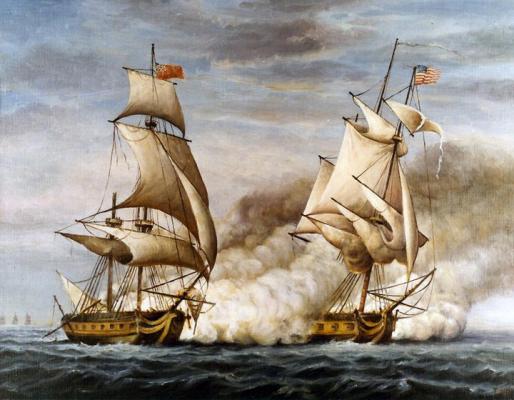
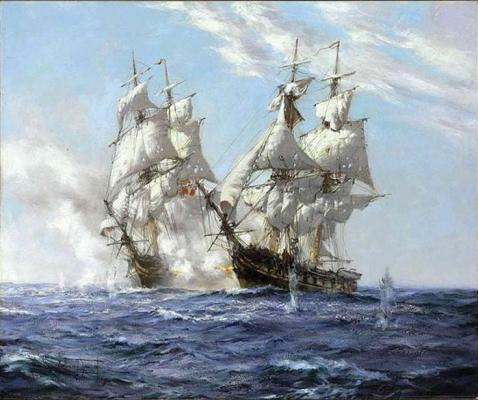
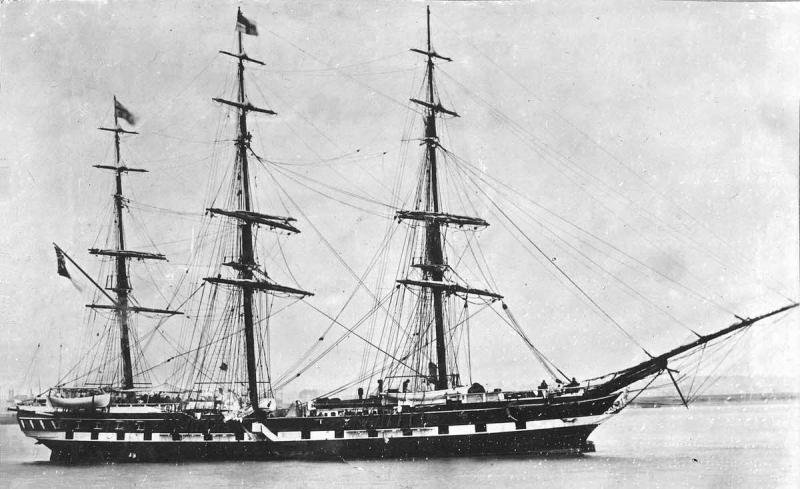
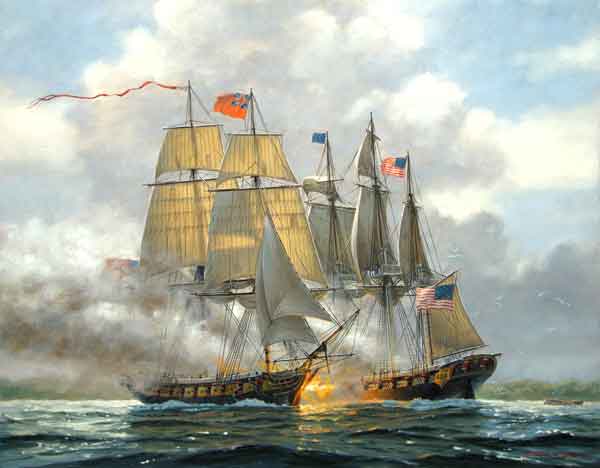
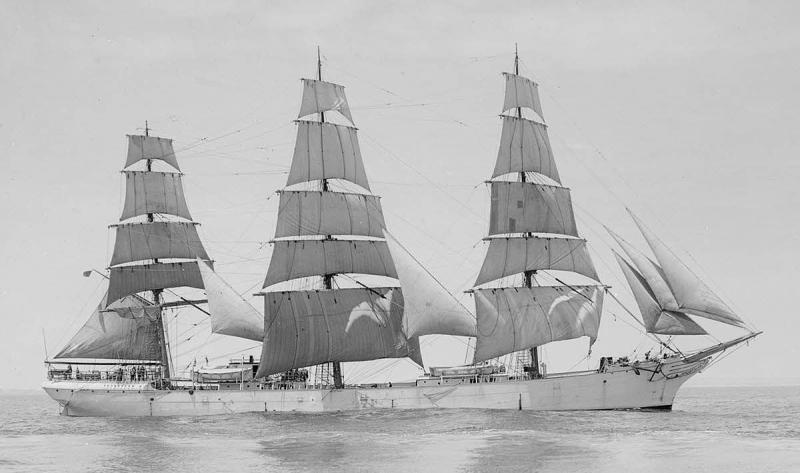
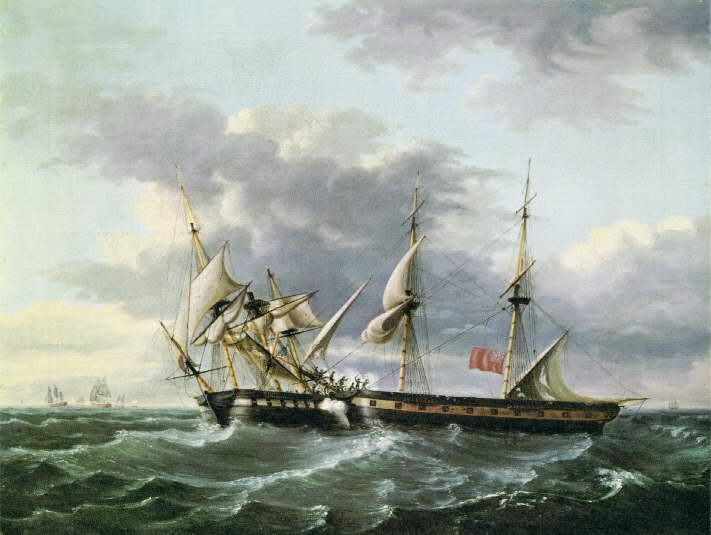
Cruizer-class Brig-Sloops of the Royal Navy
in Nautical/Naval History
Posted
I find writing to be extremely laborious. I'd much rather build ship models.